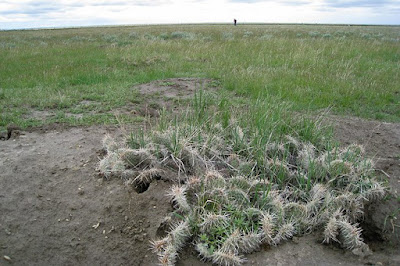
People often ask if we see snakes while birding in the tropics. Here is an image of the only snake we found on this trip, a tiny centipede snake (
Tantilla sp.) found at Cerro Azul by Karen Cedar. It wasn't much different in size from the only snake we saw in Ecuador last February. Centipede (blackhead) snakes are mostly nocturnal and feed mostly on invertebrates.
Here is a clip of Swainson's Hawks with a few Broad-winged Hawks starting to lift up over the hills on the morning we were up Cerro Azul. The observation deck was a great place to watch hawks and vultures streaming by at eye level.
Individual Broad-winged Hawks were seen on most of our walks.
The most abundant insect encountered in Panama was the leafcutter ant. The ants bring freshly cut plant material back to their underground chambers were they cultivate a particular fungus that provides the ants with food. An ant colony can contain up to several million ants!
Just to show everyone that it does rain in the rainforest. November is the wettest month of the year and yet we were rain free for the morning hours each day with only occasional rain in the afternoons.



















































